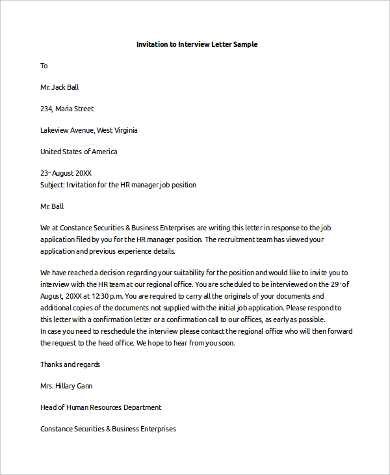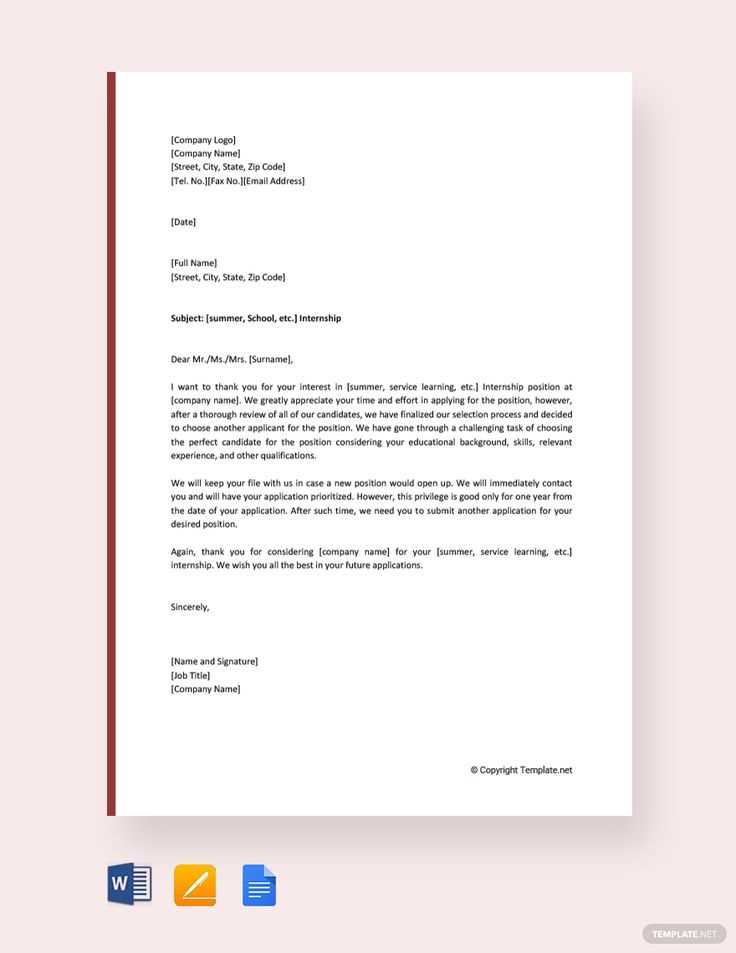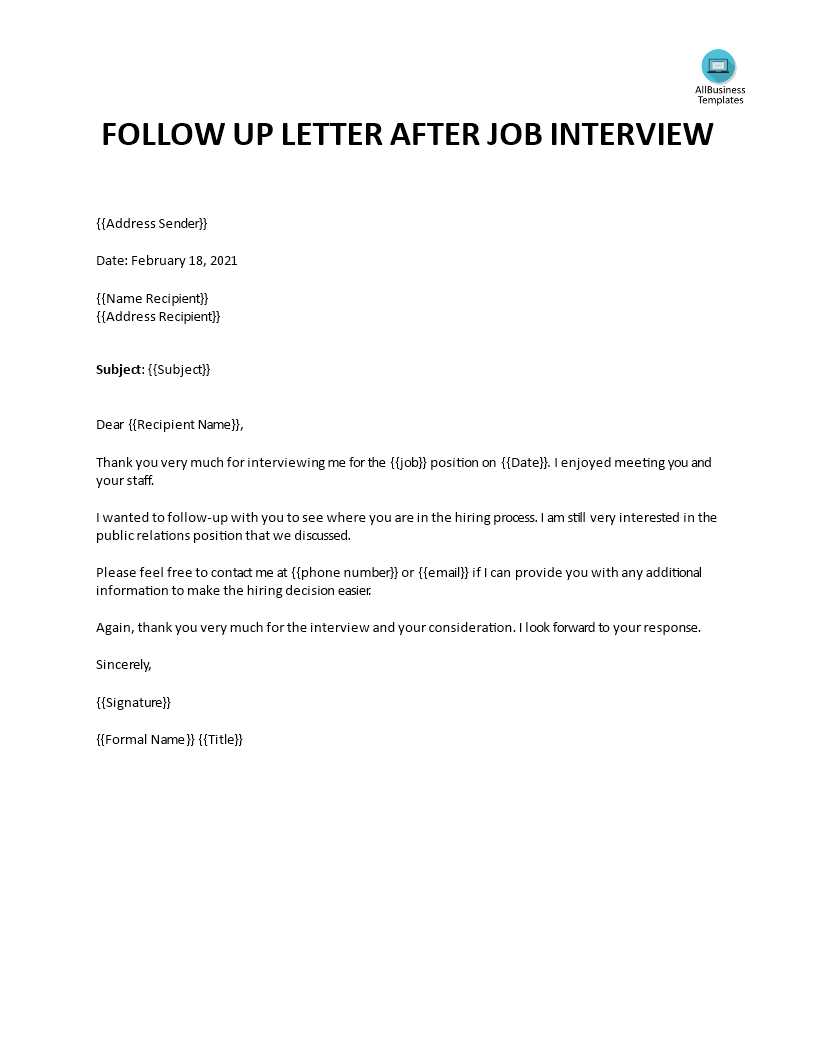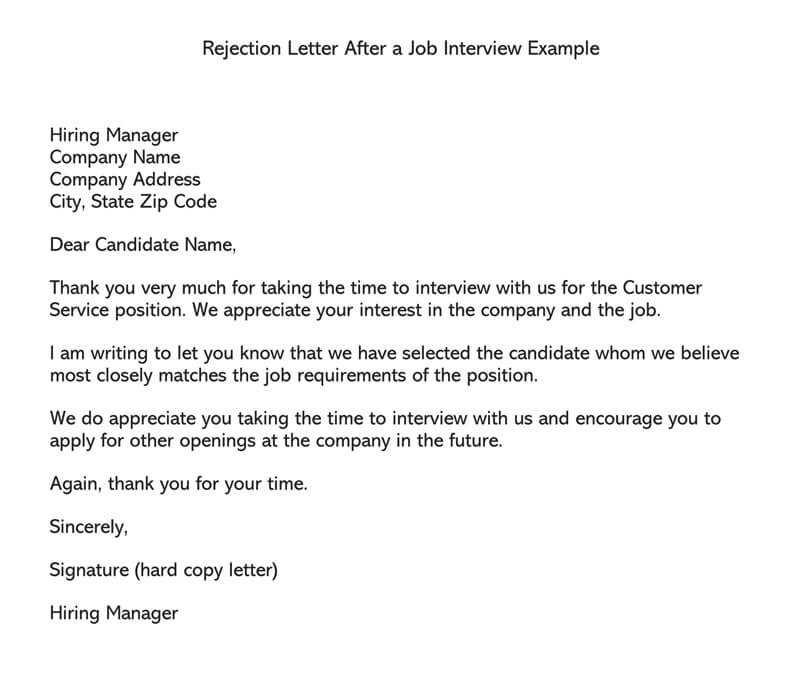Interview Letter Template for Effective Job Invitations

When it comes to inviting someone for a job opportunity, a clear and well-structured message is key to making a positive impression. The way you communicate with potential candidates sets the tone for the upcoming meeting and reflects your organization’s professionalism. Crafting such a message requires attention to detail and a formal approach that ensures clarity.
Crafting a well-worded invitation involves more than just providing the necessary details. It’s essential to maintain a balance between formal tone and a welcoming atmosphere, creating an inviting yet professional communication. This is where structure and thoughtful wording come into play, ensuring that the recipient feels valued and informed about the next steps in the process.
Tailoring your message to suit the specific circumstances of the position and the recipient is equally important. Personalization adds a touch of care, helping candidates feel recognized and prepared for the opportunity. Whether you’re inviting for a one-on-one conversation or a larger group discussion, understanding how to properly structure this communication can make a significant impact on the candidate’s experience.
Crafting a Professional Invitation
Creating a polished and professional communication is essential when reaching out to a candidate. The message should reflect both the formality of the process and the warmth of the opportunity. A well-crafted invitation serves as the first impression and sets the stage for the upcoming interaction. Attention to detail in structure, tone, and clarity ensures the recipient understands both the logistics and expectations.
The introduction should be concise, immediately indicating the purpose of the communication. It’s important to address the recipient formally and convey appreciation for their interest. Clearly outline the details, such as the time, date, and location, while maintaining a tone that is both professional and welcoming.
A thoughtful approach to the closing can leave a lasting impression. Offer further contact information or instructions for follow-up, making it easy for the recipient to respond or ask questions. Ensuring that your communication is clear, respectful, and professional will establish a positive foundation for the process ahead.
Essential Components of an Invitation
To ensure clarity and professionalism, each communication should contain several key elements that provide the recipient with all necessary details. These components help guide the recipient through the process, ensuring they understand the expectations and can easily respond or prepare. A well-structured message addresses both the logistical and personal aspects of the invitation.
Core Elements to Include

- Greeting and Salutation: Address the recipient respectfully, using their name and title when possible.
- Purpose of the Communication: Clearly state the reason for reaching out, whether it is for a scheduled meeting or an upcoming discussion.
- Details and Information: Include the date, time, and location, ensuring they are accurate and easy to follow.
- Instructions for Response: Guide the recipient on how to confirm or ask questions, providing necessary contact details or options for follow-up.
- Closing Remarks: A polite conclusion that encourages the recipient to respond or engage further if needed.
Personalization and Tone

- Personal Touch: Tailor the communication to the recipient, mentioning specific details or circumstances relevant to them.
- Professional yet Friendly Tone: Maintain a balance between being formal and approachable, making the recipient feel valued and respected.
Personalizing Your Invitation

Customization is a vital part of any professional communication. When reaching out to a potential candidate, it’s important to make them feel recognized and valued. Personalizing your message shows that you have taken the time to address the recipient individually, rather than sending a generic notification. A tailored message not only enhances the candidate’s experience but also establishes a connection from the very start.
To personalize your communication effectively, start by addressing the recipient by name. A simple greeting such as “Dear [Name]” makes the message feel more engaging and less impersonal. Furthermore, referencing specific details about the individual, such as their application or previous conversation, can demonstrate attentiveness to their qualifications and background.
Additionally, include a warm tone while maintaining professionalism. A slight mention of enthusiasm about the opportunity or excitement to meet the candidate can help foster a positive relationship. Ensure that the overall tone reflects both respect and interest in the candidate’s potential fit for the role, reinforcing the importance of their involvement.
Formatting Tips for a Polished Invitation
The way a message is presented plays a significant role in creating a positive impression. Proper structure and design not only ensure readability but also reflect professionalism. A well-organized and visually appealing communication helps the recipient to focus on the key details without distraction. By following a few simple formatting guidelines, you can ensure that your message appears both polished and easy to navigate.
Start with clear headings or subject lines to set the tone of the communication. Use a professional font, with legible sizes and appropriate spacing to avoid overcrowding the text. Break the content into short, concise paragraphs to make the message more digestible. Bullet points or numbered lists can also help highlight essential information, such as dates and locations, in a clear and structured manner.
Ensure there is enough white space around the text to prevent a cramped appearance. Keep margins uniform and allow for sufficient line spacing to make the content easier to read. Additionally, check for consistency in formatting elements, such as alignment, font usage, and paragraph breaks. These small details contribute to the overall professionalism and readability of your communication.
Avoiding Common Errors in Communications
In any formal communication, mistakes can undermine professionalism and lead to confusion. It’s important to avoid common pitfalls that can detract from the message’s clarity and effectiveness. Small errors, such as incorrect details or awkward phrasing, can negatively impact the recipient’s impression of the organization or the process itself. By focusing on accuracy and attention to detail, you can ensure that your message is both clear and professional.
Common Mistakes to Watch Out For
- Spelling and Grammar Errors: Always proofread your message for any typographical or grammatical mistakes. These errors can give the impression of carelessness.
- Incorrect Contact Information: Double-check that all provided details, such as phone numbers, emails, or addresses, are accurate and up-to-date.
- Vague Instructions: Be clear and specific about any actions the recipient needs to take, such as confirming attendance or preparing documents.
- Overly Complex Language: Keep the tone formal but easy to understand. Avoid overly complicated terms that might confuse the reader.
Ensuring Accuracy and Clarity
- Re-read the Message: Take the time to read through your communication at least once before sending it to ensure everything is in order.
- Request a Second Opinion: If possible, have someone else review your message to catch errors you may have missed.
Best Time to Send Invitations
Timing plays a crucial role in the effectiveness of any formal request. Sending a message at the right moment can increase the chances of a timely response and set a positive tone for the upcoming interaction. By considering the recipient’s schedule and being mindful of busy periods, you can ensure that your message stands out and is received with the attention it deserves.
Sending a request early in the day, typically between 9:00 AM and 11:00 AM, tends to be the most effective. At this time, the recipient is likely to be more focused and able to respond promptly. Additionally, avoiding weekends or late evenings is important, as these are times when individuals may be less responsive to formal communications.
It is also wise to consider the recipient’s location and time zone. Be sure to send the message during working hours in their time zone to avoid having it get lost in an overcrowded inbox. Furthermore, plan your message delivery a few days in advance of the proposed date to give the recipient enough time to adjust their schedule if needed.